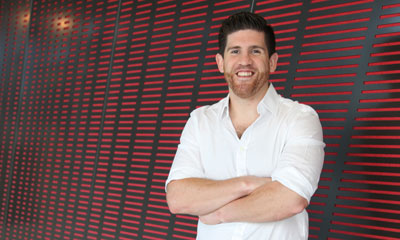Fellowship stimulates Parkinson’s research

Dr Philip Mosley’s research aims to prevent psychiatric problems some Parkinson’s disease patients encounter after undergoing a surgical procedure to improve motor function.
Ground-breaking neuroscience research is offering new possibilities to help patients with Parkinson’s disease.
Dr Philip Mosley, a staff psychiatrist at Royal Brisbane and Women’s Hospital, and a researcher at QIMR Berghofer, has been awarded a $180,000 Advance Queensland Research Fellowship for his work on overcoming the negative impact of Deep Brain Stimulation (DBS) treatment on some people with Parkinson’s disease. Dr Mosley has received additional support from QIMR Berghofer and industry totalling over $500,000 to progress this research.
Parkinson’s disease is the second most common neurological condition in Australia after Alzheimer’s dementia. It is diagnosed on the basis of ‘motor’ symptoms including tremor, stiffness and slowness, although sufferers commonly also experience ‘non-motor’ psychiatric symptoms including depression, anxiety, psychotic symptoms and impulse control disorders.
DBS is a surgical procedure used to treat the movement symptoms of Parkinson’s disease that involves implanting electrodes in both sides of the brain which are then programmed to deliver continuous electrical stimulation.
“DBS is a wonderful treatment for most people with Parkinson’s disease, but unfortunately up to 20% of patients develop significant psychiatric symptoms in the early months after DBS. These commonly include changes to personality and decision-making, such as loss of empathy and recklessness” Dr Mosley said.
Working as a neuropsychiatrist, Dr Mosley said the motivation for his research was driven by the trauma and suffering this cohort of patients and their families endured.
“My research aims to find a reliable method of predicting which patients are at risk before they undergo the DBS procedure,” he said. “In addition, once the electrodes are implanted, we aim to work out which brain regions are stimulated through their neuronal connections with the surgical target.”
“Using the state-of-the-art brain imaging technology at the Herston Imaging Research Facility (HIRF), we’ll produce a map of connections within the brain that are associated with psychiatrically safe stimulation.
“This knowledge will help to guide DBS electrode programming and improve the safety profile of this important therapy, which has been used to treat over 100,000 patients worldwide.”
